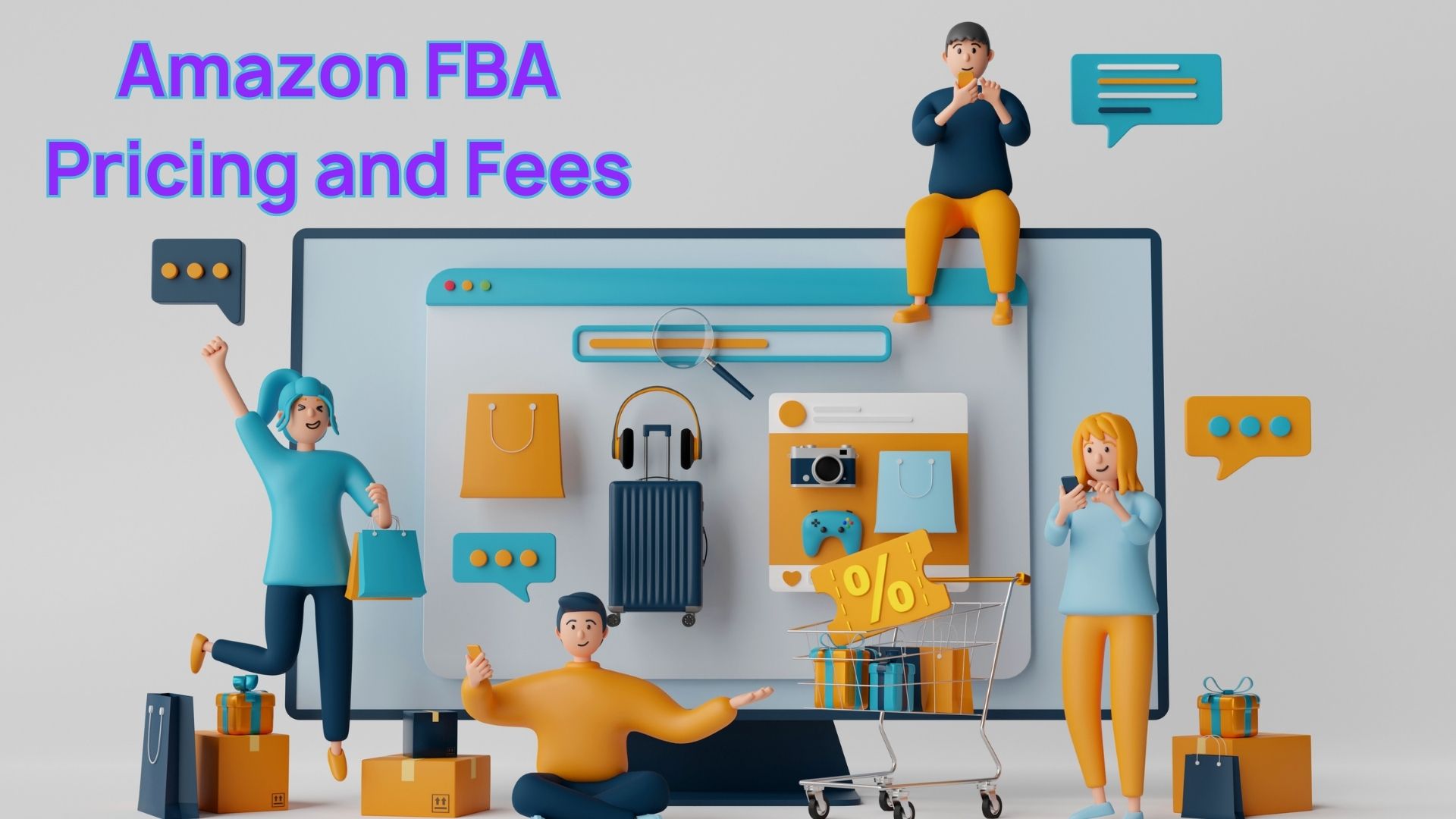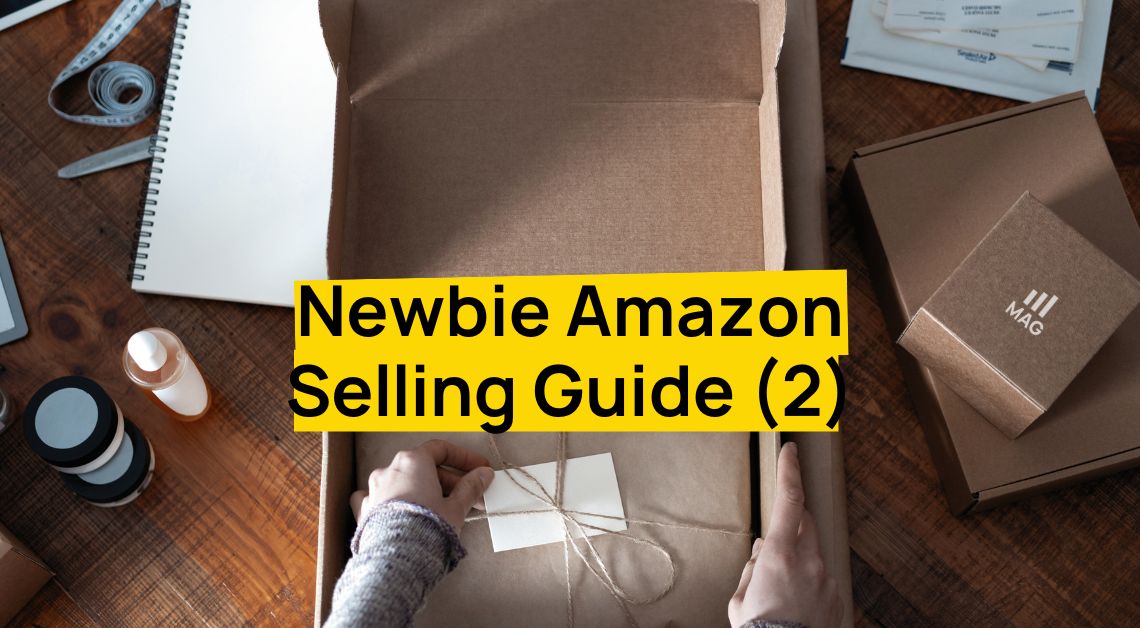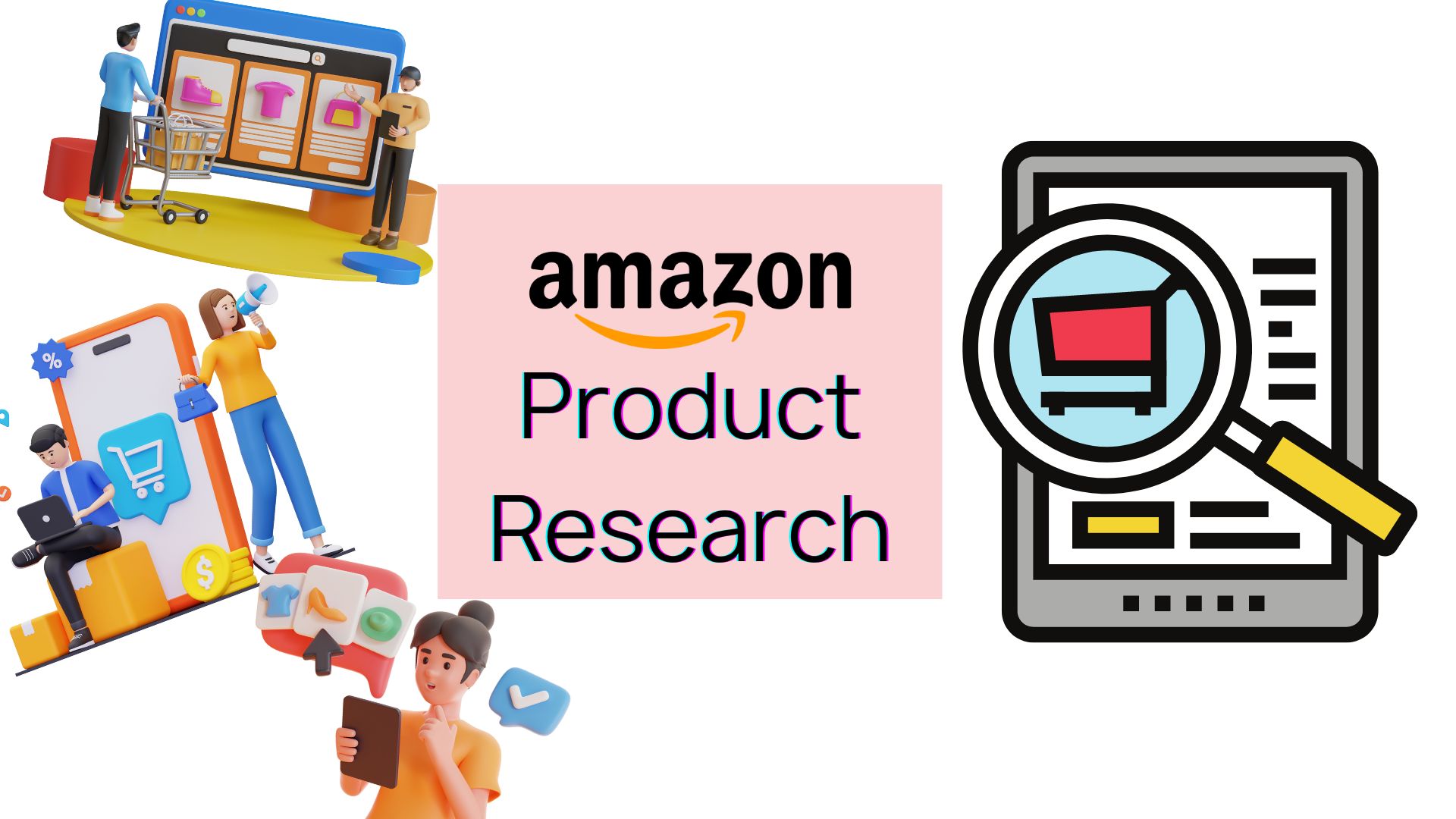Amazon AB testing is a powerful tool that can help you improve your product listings and increase sales. By comparing two versions of an item, you can see which one performs better in terms of conversions.
This can give you valuable insights into what works best for your target audience, so you can make data-driven decisions to improve your listings and increase revenue. This blog post will discuss essential Amazon AB testing details for successful marketplace performance.
Amazon AB Testing Is A Game-Changer for Sellers
Why would Amazon sellers want to run AB testing?
According to Amazon, AB testing with Manage Your Experiments helped brands increase sales by up to 25% in 2022.
AB testing (AKA “split testing”) involves creating two or more versions of a specific element within a listing, such as product titles, images, descriptions, pricing, or even advertising campaigns. These variations are then presented to a portion of the target audience, and the performance of each version is measured to determine which one yields better results.
By conducting AB tests, Amazon sellers can gather valuable data and insights on how customers respond to different variations. This data-driven approach allows sellers to make informed decisions about their listings and make improvements that are more likely to resonate with their target audience.
Some benefits of Amazon AB testing for sellers include:
- Increased Conversion Rates: AB testing helps sellers identify the most effective combination of elements that lead to higher conversion rates. By optimizing their listings based on data-driven insights, sellers can attract more customers and drive more sales.
- Improved Customer Engagement: Testing different variations of product images, titles, and descriptions can help sellers understand what captures the attention and interest of customers. By presenting more appealing and engaging content, sellers can enhance the overall shopping experience and increase customer engagement.
- Enhanced Market Competitiveness: AB testing enables sellers to stay ahead of the competition by constantly refining and improving their listings. By adapting to changing market trends and consumer preferences, sellers can maintain a competitive edge and attract more customers.
- Maximizing ROI: AB testing can also be applied to advertising campaigns on Amazon. By testing different ad variations, targeting options, and bidding strategies, sellers can optimize their ad spend and achieve a higher return on investment.
What Items Can I Do Amazon AB Testing For?
When it comes to Amazon AB testing, there are several elements that you can test to optimize your product listings and improve conversion rates. Here are some items that you can consider for AB testing on Amazon:
- Product Titles: Test different variations of product titles to see which ones perform better in terms of search ranking and click-through rates.
- Product Images: Experiment with different product images to analyze their impact on customer engagement and conversion rates.
- Product Descriptions: AB test variations of your product descriptions to determine which formats, lengths, and content styles resonate best with your target audience.
- Bullet Points: Test different bullet point formats, wording, and order to discover the most effective way to present key product features and benefits.
- Pricing Strategies: Experiment with different price points and discount strategies to find the optimal pricing strategy that maximizes sales and profitability.
- Product Reviews and Ratings: AB test different methods of soliciting product reviews and ratings to increase social proof and build customer trust.
- Amazon Advertising Campaigns: Test variations of ad copy, targeting options, and bidding strategies to optimize your Amazon advertising campaigns and improve ROI.
- Enhanced Brand Content (EBC) and A+ Content: AB test different variations of enhanced content modules to enhance the visual appeal of your product detail pages.
Requirements for Running Amazon AB Testing
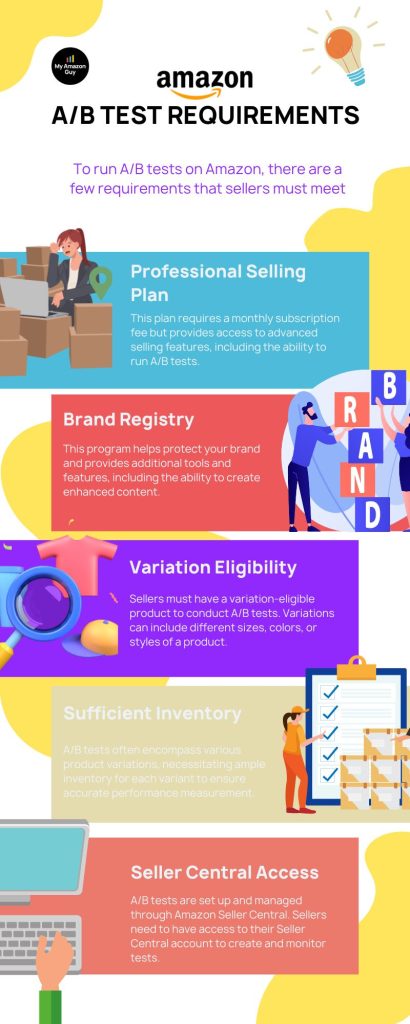
It’s worth noting that Amazon may have additional requirements or restrictions based on specific categories or features. It’s important to review Amazon’s guidelines and policies to ensure compliance before conducting AB tests.
Setting Up Amazon AB Testing
As a brand owner, you can run AB tests (also known as split tests) on your listing content with Manage Your Experiments.
To set up the experiment on Amazon:
Go to Brands > Manage Experiments > Create a New Experiment.
Choose the item that you want to run an experiment for.
Every type of experiment has its specific requirements.
General Steps for Running Amazon AB Testing
- Identify the Element to Test: Determine which element of your product listing or advertising campaign you want to test. This could be the product title, main product image, bullet points, pricing, or even the ad copy and targeting options for your ads.
- Create Variations: Develop different variations of the element you want to test. For example, if you’re testing the product title, create two or more variations with different wording or keyword placement.
- Split Test: Split your target audience into equal or proportional segments. Show each segment a different variation of the element you’re testing. This can be done through Amazon’s built-in AB testing tools or by manually allocating traffic.
- Set Testing Duration: Determine the duration of your AB test. It should be long enough to gather sufficient data and statistically significant results. The length of the test may vary depending on factors such as traffic volume and conversion rates.
- Track and Analyze Results: Monitor the performance of each variation during the testing period. Track metrics such as click-through rates, conversion rates, and overall sales. Analyze the data to identify the variation that performs better in terms of your desired outcome.
- Implement the Winning Variation: Once you have determined the winning variation based on the test results, implement it as the default version of the tested element on your product listing or advertising campaign.
The Right Metrics for Amazon AB Testing
Important Key performance indicators (KPIs)
Optimizing Product Titles with AB Testing
Product titles play a critical role in both search ranking and conversion rates on Amazon. Here’s why:
- Search Ranking: The product title is one of the most important factors in determining search relevancy on Amazon. When a customer searches for a product, Amazon’s algorithm scans product titles to understand the relevance of each listing. Including relevant keywords in your product title can improve your chances of appearing in search results and increase your visibility to potential customers.
- Click-Through Rates (CTR): A well-crafted product title can attract more clicks from customers who see it in search results. By including compelling and descriptive information, such as key features or unique selling points, you can entice customers to click on your listing over others. Higher click-through rates indicate that your title is effectively capturing customer attention and generating interest in your product.
- Conversion Rates: Once a customer clicks on your listing, the product title continues to play a crucial role in conversion rates. It sets the initial expectation for the product and helps customers quickly determine if it meets their needs. A clear and concise title that accurately represents your product can instill confidence in customers and increase the likelihood of conversion.
- Mobile Optimization: With the majority of Amazon shoppers using mobile devices, product titles have become even more important. Mobile screens have limited space, so it’s crucial to create concise and attention-grabbing titles that are easily readable on smaller screens. A well-optimized mobile title can improve visibility and engagement, leading to better search ranking and conversion rates.
It’s important to note that while product titles are important, they should also comply with Amazon’s guidelines. Titles should accurately describe the product, avoid excessive use of promotional language or symbols, and follow any specific category requirements.
Optimizing your product titles by incorporating relevant keywords, focusing on customer appeal, and following Amazon’s guidelines can positively impact both search ranking and conversion rates, ultimately leading to increased visibility and sales on the platform.
Watch Steven Pope, flounder of My Amazon Guy, as he shows how to set up an Amazon A/ test for product titles:
Why Run AB Tests on Product Titles
- Optimize Search Relevance: AB testing allows you to experiment with different variations of product titles to identify the most effective keywords and phrases that improve search relevancy. By testing different combinations of keywords, you can determine which ones resonate better with Amazon’s search algorithm and increase the visibility of your product in search results.
- Improve Click-Through Rates (CTR): A compelling product title can significantly impact the click-through rates from search results to your product listing. AB testing different variations of titles helps you identify the wording, formatting, and structure that attracts more clicks. By optimizing your titles for higher CTRs, you can increase the number of potential customers visiting your product page.
- Enhance Conversion Rates: AB testing product titles can also help improve conversion rates. Through testing, you can identify which title variations resonate better with your target audience, clearly communicate the value proposition, and increase the likelihood of customers making a purchase. An optimized product title can create a strong first impression and build trust with customers.
- Stay Competitive: The e-commerce landscape is highly competitive, and it’s crucial to stay ahead of your competitors. AB testing allows you to continuously refine and optimize your product titles to maintain a competitive edge. By testing and iterating, you can ensure that your titles are always relevant, engaging, and aligned with customer preferences.
- Data-Driven Decision Making: AB testing provides valuable data and insights about customer behavior and preferences. By analyzing the results of your tests, you can make data-driven decisions about which title variations perform the best and implement those changes to drive better results.
Creating Compelling Product Titles
Crafting compelling and effective product titles is crucial to captivate your target audience and drive engagement. Here are some tips to help you create impactful product titles:
- Research Keywords: Start by conducting keyword research to understand the words and phrases that your target audience is using to search for products like yours. Use tools like Amazon’s search bar suggestions, keyword research tools, and competitor analysis to identify relevant keywords that have high search volume and low competition.
- Highlight Key Features and Benefits: Include the most important and compelling features or benefits of your product directly in the title. Highlight what sets your product apart and how it solves a problem or meets a need for your target audience. Focus on the unique selling points that make your product irresistible.
- Keep it Concise and Clear: Product titles should be concise and easy to understand. Amazon has character limits for titles, so make sure to communicate the essential information within those limits. Avoid using jargon or complex language that may confuse or alienate potential customers.
- Use Action Words and Power Phrases: Incorporate action words or power phrases that evoke emotion and create a sense of urgency. Words like “new,” “exclusive,” “limited time offer,” or “best-selling” can capture attention and generate interest in your product.
- Consider Formatting: Use appropriate capitalization and punctuation to enhance readability and make your title visually appealing. Break up long titles into shorter phrases or bullet points if necessary. However, avoid excessive or unnecessary symbols, as they may violate Amazon’s guidelines.
- Test and Iterate: As mentioned earlier, AB testing can help you identify the most effective product title variations. Continuously test different combinations of keywords, wording, and formatting to see which resonates best with your target audience. Analyze the results and make data-driven decisions to optimize your titles over time.
- Follow Amazon’s Guidelines: Ensure that your product titles comply with Amazon’s guidelines and category-specific requirements. Violating these guidelines can result in your listing being suppressed or removed.
Amazon AB Testing Product Images and Videos
Visuals play a significant role in influencing conversion rates and customer engagement. Here’s how visuals can impact these factors:
- Attention and Engagement: High-quality and visually appealing product images can immediately capture the attention of customers and engage them with your listing. When customers see attractive visuals, they are more likely to stay on your product page longer, explore the details, and consider making a purchase.
- Trust and Credibility: Clear and professional product images can instill trust and credibility in potential customers. When customers can see the product from different angles, view its features, and get a sense of its quality, they feel more confident in making a purchase. Including images that showcase product details, packaging, and any relevant certifications can further enhance trust.
- Product Understanding: Visuals help customers better understand the product, its features, and how it can be used. Images can provide context, demonstrate size or scale, showcase different color options, or illustrate product functionality. When customers have a clear understanding of the product, they can make informed purchasing decisions.
- Emotional Connection: Visuals have the power to evoke emotions and create a connection with customers. By using lifestyle images or product shots that depict the product being used in real-life scenarios, you can tap into customers’ desires, aspirations, or pain points. This emotional connection can drive engagement and increase the likelihood of conversion.
- Mobile Shopping Experience: With the increasing popularity of mobile shopping, visuals are even more crucial. Mobile screens have limited space, and visuals can quickly convey information compared to lengthy text descriptions. High-quality product images that are optimized for mobile devices can enhance the shopping experience and encourage customers to explore further.
- Social Proof: Visuals can also incorporate social proof elements, such as customer reviews, ratings, or testimonials. Including visuals that showcase positive customer experiences or testimonials can further strengthen trust and encourage potential customers to convert.
It’s important to note that visuals should accurately represent the product and its features. High-resolution images, multiple angles, and zoom functionality can provide a more immersive shopping experience. Regularly updating visuals to reflect any changes or improvements to the product can also help maintain customer interest and engagement.
Here are some videos to watch to learn about AB testing visuals like main image and A+ content:
How To Craft Compelling And Effective Visuals
To craft compelling and effective visuals, consider the following tips:
- Understand Your Audience: Gain a deep understanding of your target audience’s preferences, interests, and needs. This knowledge will help you create visuals that resonate with them and capture their attention.
- Tell a Story: Use visuals to tell a story about your product or brand. Show how your product solves a problem or enhances the lives of your customers. Create a narrative that customers can connect with and relate to.
- Keep it Simple: Avoid cluttering your visuals with too much information. Keep the design clean, uncluttered, and easy to understand. Use visuals that convey the message succinctly and effectively.
- Use Colors and Contrast: Colors can evoke emotions and convey messages. Choose colors that align with your brand and evoke the desired emotions in your audience. Additionally, use contrast effectively to make important elements stand out and grab attention.
- Use High-Quality Images: Invest in high-quality images that are clear, sharp, and visually appealing. Blurry or low-resolution images can create a negative impression and undermine the credibility of your brand.
- Incorporate Branding Elements: Ensure that your visuals incorporate consistent branding elements such as your logo, color scheme, and typography. This helps build brand recognition and reinforces your brand identity.
- Be Authentic and Original: Create visuals that are unique and authentic to your brand. Avoid using generic or stock images that may not accurately represent your product or brand. Authentic visuals help build trust and differentiate your brand from competitors.
- Consider Visual Hierarchy: Use visual hierarchy to guide the viewer’s attention to the most important elements of your visuals. Choose the right size, placement, and color to highlight key information or calls to action.
- Test and Iterate: Continuously test different visual elements and strategies to see what resonates best with your audience. Use data and feedback to refine and improve your visuals over time.
Amazon AB Testing with Product Descriptions
Persuasive and informative product descriptions play a crucial role in driving conversions. Here’s why they are important:
- Capturing Attention: A persuasive product description grabs the attention of potential customers and entices them to explore further. It should highlight the unique selling points of the product, showcase its benefits, and create a desire to own it.
- Communicating Value: An informative product description effectively communicates the value and features of the product. It should clearly explain how the product solves a problem or meets a need for the customer. By highlighting the product’s key features, specifications, and functionalities, you can help customers understand why they should choose your product over others.
- Building Trust: A well-crafted product description builds trust and credibility with customers. It should provide accurate and detailed information about the product, including its quality, materials, dimensions, and any certifications or warranties. When customers feel confident that they are making an informed decision, they are more likely to trust your brand and make a purchase.
- Overcoming Objections: Effective product descriptions address potential objections or concerns that customers may have. By providing clear and persuasive information, you can alleviate doubts and reassure customers that your product is the right choice for them. Anticipate common questions or objections and address them proactively in your description.
- Creating Emotional Connection: Persuasive product descriptions have the power to create an emotional connection with customers. By using storytelling techniques, evocative language, and relevant anecdotes, you can tap into customers’ desires, aspirations, or pain points. Connecting on an emotional level can significantly increase the chances of conversion.
- SEO Optimization: Product descriptions also play a role in search engine optimization (SEO). By incorporating relevant keywords naturally into your description, you can improve your product’s visibility in search results. This can drive organic traffic to your listing and increase the likelihood of conversions.
- Differentiation: Persuasive and informative product descriptions can help differentiate your product from competitors. Highlight the unique features, benefits, or aspects of your product that set it apart. By showcasing what makes your product special, you can attract customers who are specifically looking for those qualities.
- Call-to-Action: A persuasive product description should include a clear and compelling call-to-action (CTA). Encourage customers to take the next step, such as adding the product to their cart, making a purchase, or exploring related products. A well-placed CTA can guide customers toward conversion and increase your overall conversion rate.
To know more about product descriptions, here’s a video you can watch:
Formats, Lengths, And Content Styles To Experiment With
When it comes to experimenting with product descriptions to find the most compelling format, length, and content style, there are several options to consider. Here are some formats, lengths, and content styles to experiment with:
- Format:
– Bullet points: Use concise bullet points to highlight key features, benefits, and specifications of the product. This format is easy to scan and can quickly grab the attention of customers.
– Paragraphs: Utilize well-structured paragraphs to provide a detailed and cohesive description of the product. This format allows for storytelling and a more narrative approach to engage customers.
- Length:
– Short and concise: Experiment with shorter descriptions that get straight to the point. This can be effective for products with clear and simple value propositions.
– Long and detailed: Try longer descriptions that provide in-depth information about the product. This can be useful for complex or high-end products where customers require more information to make a purchasing decision.
- Content Styles:
– Technical and factual: Focus on providing detailed technical specifications, dimensions, materials, and other relevant factual information. This style appeals to customers who prioritize specific product details.
– Emotional and descriptive: Create a story around the product, using descriptive language to evoke emotions and paint a vivid picture in the customer’s mind. This style can be effective for products that cater to customers’ aspirations and desires.
– Social proof and testimonials: Incorporate customer reviews, testimonials, or social proof elements into the product description. This adds credibility and provides real-life experiences to potential customers.
Amazon AB Testing Pricing Strategies
Pricing has a significant impact on sales and profitability. Here’s how pricing can affect these aspects of your business:
- Sales Volume: The price of a product directly influences its demand. Higher prices can reduce the number of customers willing to purchase, resulting in lower sales volume. On the other hand, lower prices can attract a larger customer base and potentially increase sales volume. Finding the right balance between price and demand is crucial to optimize sales.
- Price Elasticity: Price elasticity refers to the sensitivity of demand to changes in price. Some products are more price-sensitive than others. If a product is highly elastic, even a small price increase can significantly decrease demand. Understanding the price elasticity of your products can help you make informed pricing decisions to maximize sales and revenue.
- Competitive Positioning: Pricing also plays a role in how your products are perceived in the market compared to competitors. If your prices are significantly higher than similar products, customers may perceive your offerings as premium or exclusive. Conversely, lower prices can position your products as affordable or value-oriented. Understanding your target market and competitive landscape can help you determine the optimal pricing strategy for your business.
- Profit Margins: Pricing directly impacts your profit margins. Higher prices can lead to higher profit margins per unit sold, but may result in lower sales volume. Conversely, lower prices may lead to higher sales volume, but with smaller profit margins per unit. It’s important to strike a balance between pricing and profit margins to ensure sustainable profitability.
- Promotions and Discounts: Offering promotions, discounts, or sales can influence sales and profitability. Temporary price reductions or limited-time offers can create a sense of urgency and incentivize customers to make a purchase. However, it’s important to carefully analyze the impact of promotions on overall profitability, as steep discounts may erode profit margins if not managed effectively.
- Price Testing and Optimization: Regularly testing and optimizing your pricing strategy is essential to maximize sales and profitability. Conducting AB testing, monitoring customer behavior, and analyzing data can help you identify the most effective pricing points for your products. Continuously experimenting and adjusting your pricing strategy based on customer response can lead to improved sales and profitability.
How Can I Perform A Dynamic Pricing Experiment
- Define your pricing objectives: Clearly define the goals you want to achieve through dynamic pricing. It could be maximizing revenue, increasing market share, or optimizing profit margins. Understanding your objectives will help guide your experiment.
- Gather data: Collect relevant data that can inform your dynamic pricing strategy. This includes factors such as customer behavior, market demand, competitor pricing, and historical sales data. The more data you have, the better you can tailor your pricing strategy.
- Identify pricing variables: Determine the specific pricing variables that you want to experiment with dynamically. This could include factors such as time-based pricing, personalized pricing, location-based pricing, or demand-based pricing. Each variable should be clearly defined and measurable.
- Implement pricing automation software: To carry out dynamic pricing effectively, you’ll need pricing automation software. This software uses algorithms and real-time data to adjust prices based on predefined rules and variables. There are various pricing automation tools available that integrate with e-commerce platforms and provide dynamic pricing capabilities.
- Set up test groups: Divide your target audience into different test groups based on the pricing variables you want to test. Assign each group to a specific pricing strategy or set of rules. This will allow you to compare the performance of different dynamic pricing strategies and measure their impact on key metrics.
- Monitor and analyze results: Track the performance of each test group over a defined period. Monitor key metrics such as sales volume, revenue, profit margins, and customer behavior. Analyze the data to identify any significant differences between the test groups and evaluate the effectiveness of each dynamic pricing strategy.
- Iterate and refine: Based on the results, refine your dynamic pricing strategy and conduct further experiments if needed. Gradually narrow down the options and continue to iterate until you find the optimal dynamic pricing strategy that aligns with your objectives and drives desired outcomes.
- Monitor market conditions: Keep a close eye on market conditions, competitor pricing, and customer preferences. Adjust your pricing strategy accordingly to remain competitive and responsive to changes in the market.
It’s important to note that dynamic pricing requires careful planning, continuous monitoring, and ongoing optimization. Regularly analyze the data, adapt your pricing strategy based on customer response and market dynamics, and ensure that your pricing remains competitive and profitable.
Optimizing Product Reviews and Ratings
Reviews and ratings play a crucial role in customer trust and purchase decisions. Here’s how they influence customers and why running AB tests on different methods to solicit product reviews can be beneficial:
- Social Proof: Reviews and ratings provide social proof, which is a powerful psychological phenomenon. When potential customers see positive reviews and high ratings, it builds trust and confidence in the product. They perceive that others have had a positive experience, increasing the likelihood of making a purchase.
- Authenticity and Transparency: Genuine customer reviews and ratings showcase the authenticity and transparency of your products. Customers trust the opinions and experiences of other buyers more than promotional messages from the seller. Honest feedback helps customers make informed decisions and promotes transparency in your business.
- Product Validation: Reviews and ratings serve as a form of product validation. Positive reviews validate the quality, features, and benefits of the product, addressing potential concerns or doubts customers may have. This validation reassures customers that they are making a wise purchase decision.
- Customer Engagement: Encouraging customers to leave reviews and ratings creates a sense of engagement and involvement. It shows that you value their opinion and feedback, fostering a positive relationship between your brand and customers. This engagement can lead to increased loyalty and repeat purchases.
- SEO Impact: Reviews and ratings can have a positive impact on search engine optimization (SEO). User-generated content, such as reviews, can improve search engine rankings and visibility. This can result in higher organic traffic and increased brand exposure.
Watch these videos below to teach you more about customer feedback and product reviews:
Running AB tests on different methods to solicit product reviews can be beneficial for several reasons:
- Identify Effective Review Solicitation Methods: AB testing allows you to compare different methods of soliciting product reviews, such as email requests, post-purchase prompts, or incentives for leaving a review. By testing different approaches, you can identify the most effective method for your target audience and product category.
- Optimize Conversion Rates: AB testing can help optimize the conversion rates of review solicitations. By testing variations of the review request message, call-to-action, timing, or incentives, you can determine which elements have the highest impact on customer response and increase the likelihood of receiving reviews.
- Improve Review Quality and Quantity: AB testing can help you understand the factors that influence the quality and quantity of reviews. By testing different approaches, you can encourage more customers to leave reviews and ensure the feedback is valuable and relevant to potential buyers.
- Personalization and Segmentation: AB testing allows you to personalize and segment your review solicitations based on customer demographics, purchase history, or behavior. This targeted approach can increase the likelihood of receiving reviews from the right customers, leading to more relevant and impactful feedback.
Proven Tactics For AB Testing Various Review Solicitation Methods
- Test different times, frequencies, and incentives for sending review requests.
- Experiment with the placement of review requests on your website or within your email communications.
- Test different variations of the language and design used in your review request communications.
- Personalize and segment your review solicitations to make them more relevant to each customer.
- Include social proof and testimonials in your review solicitations.
- Test different channels for soliciting reviews, such as email, SMS, or in-app notifications.
- Follow up with customers who have left reviews to show appreciation and address any concerns.
Amazon AB Testing Advertising Campaigns
Testing ad copy, targeting, and bidding strategies is essential for maximizing advertising return on investment (ROI). Here are some tactics you can consider:
- Ad Copy Testing:
– Test different headlines, descriptions, and calls-to-action in your ad copy. Experiment with variations in wording, tone, and messaging to see which resonates best with your target audience.
– AB test different ad formats, such as image-based ads versus video ads, to determine which format generates a higher ROI.
– Try different ad extensions, such as sitelinks or callouts, to provide additional information and incentives to potential customers.
- Targeting Testing:
– Test different audience segments to identify the most responsive and profitable groups. This can involve testing demographics, interests, behaviors, or geographic targeting options.
– Experiment with different ad placements, such as specific websites or apps, to reach your target audience more effectively.
– Consider testing different remarketing strategies to target users who have already shown interest in your products or visited your website.
- Bidding Strategy Testing:
– Test different bidding strategies, such as manual bidding versus automated bidding, to find the most cost-effective approach for your campaigns.
– Experiment with bid adjustments for different factors, such as device, location, or time of day, to optimize your bids based on performance trends.
– Consider testing different bid modifiers for audience segments, such as adjusting bids for high-value or low-value customers.
- Conversion Tracking and Attribution Testing:
– Implement conversion tracking to measure the impact of your advertising efforts on actual conversions and sales.
– Test different attribution models, such as first-click or last-click attribution, to determine the most accurate way to attribute conversions to your advertising campaigns.
– Experiment with different conversion actions or goals to track, such as sign-ups, purchases, or leads, to gain insights into the effectiveness of your campaigns.
- Ad Testing Frequency and Duration:
– Test different frequencies and durations for running your ads. Experiment with shorter or longer campaign durations and analyze the impact on ad performance and ROI.
– Determine the optimal frequency cap for your ads to avoid ad fatigue and maintain customer engagement.
Watch and listen to Steven as he explains about Amazon advertising in this video:
Analysis And Interpretation Of Amazon AB Testing
Analysis and interpretation of Amazon AB testing involves examining the results of your tests and drawing meaningful insights to inform decision-making and optimize your Amazon business. Here are some steps to guide you through the analysis and interpretation process:
- Define Key Metrics: Start by identifying the key metrics or performance indicators that are relevant to your AB test. These could include conversion rate, click-through rate, sales, average order value, or other metrics specific to your goals. Determine which metrics will be used to evaluate the success of your test.
- Statistical Significance: Assess the statistical significance of your test results. This helps determine if the observed differences between the control and variant groups are statistically significant or due to chance. Statistical significance is typically measured using statistical tests like chi-square, t-test, or ANOVA. Ensure that your sample size is sufficient for reliable results.
- Analyze Metrics: Compare the performance of the control group (A) with the variant group (B) across the defined metrics. Look for significant differences in performance between the two groups. Consider both the magnitude of the difference and the statistical significance.
- Segment Analysis: Conduct segment analysis to understand how different customer segments or cohorts respond to the AB test variations. This can help identify specific segments that may benefit more from the variant or provide insights into the impact of the test on different customer groups.
- Qualitative Feedback: Consider qualitative feedback, such as customer reviews, feedback surveys, or comments, to gain a deeper understanding of the customer perception and experience related to the AB test variations. Qualitative feedback can provide valuable context and help interpret quantitative results.
- Learnings and Insights: Based on the analysis, identify the key learnings and insights from the AB test. Determine if the variant group outperformed the control group and if the observed differences are statistically significant. Understand the impact of the test on customer behavior, engagement, or conversion.
- Iteration and Optimization: Use the insights gained from the AB test analysis to inform future iterations and optimizations. Implement the winning variant if it performed significantly better than the control group. Alternatively, refine and iterate on the test variations to further improve performance.
- Documentation and Reporting: Document the findings, insights, and recommendations from the AB test analysis. This documentation serves as a reference for future decision-making and can be shared with stakeholders or team members to facilitate alignment and collaboration.
Can I Run AB Tests On Other Platforms Or Websites And Not Just On Amazon?
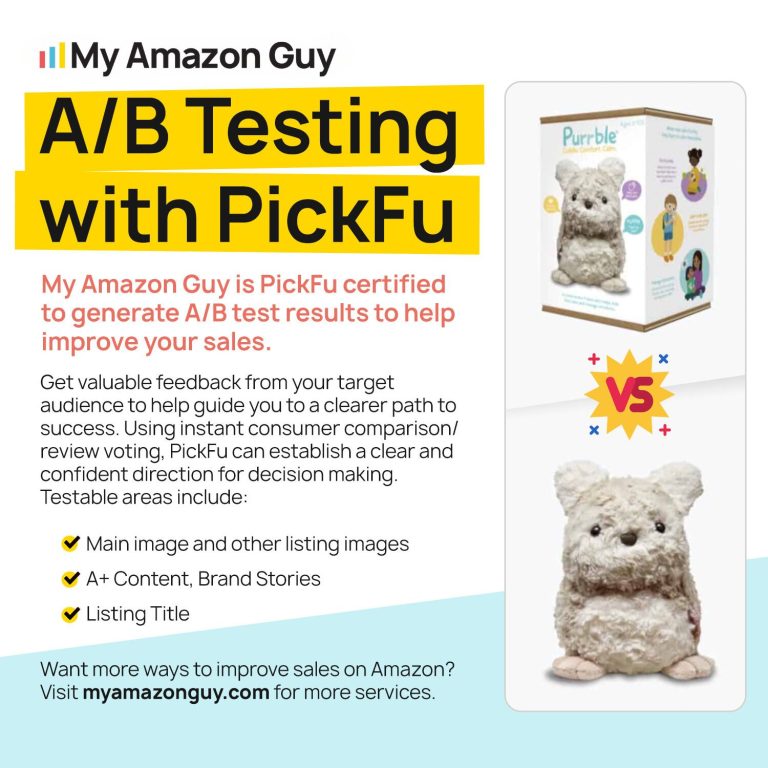
Yes, AB testing is not limited to Amazon and can be conducted on various other e-commerce platforms and websites. AB testing is a widely used method in digital marketing and e-commerce to optimize user experience, conversion rates, and overall performance.
PickFu, for example, is a popular tool that can be used for AB testing and gathering feedback on various aspects of your e-commerce business, including Amazon listings. It allows you to create polls and surveys to get opinions and insights from a targeted audience, helping you make data-driven decisions.
With PickFu, you can create AB tests by presenting different variations of your Amazon listing, such as different product images, titles, bullet points, or descriptions, to respondents. The respondents then provide feedback and vote on which variation they prefer or find more appealing.
Conclusion
In the ever-evolving landscape of Amazon selling, staying ahead requires a strategic approach that blends innovation with data-driven decision-making. Amazon AB testing emerges as your powerful ally in this pursuit, offering a gateway to optimizing your product listings and driving exponential growth. As an Amazon seller or enthusiast, you hold the key to unlocking untapped potential by harnessing the insights offered by AB testing.
From the inception of understanding what AB testing entails to mastering the intricate details of crafting effective experiments, you’ve embarked on a journey that empowers your Amazon business like never before. Each step you take in this journey, guided by the expert insights shared in this comprehensive guide, propels you toward enhanced conversions, improved rankings, and amplified revenue.
My Amazon Guy, armed with PickFu certification and a commitment to your success, stands ready to accompany you on this journey. As you embrace AB testing, remember that it’s not just about comparing two versions; it’s about understanding your audience, making informed choices, and optimizing your listings for a more compelling customer experience.
So, are you ready to turn insights into action? Seize the opportunity to transform your Amazon business, one experiment at a time. Elevate your approach, redefine your success, and let AB testing lead you to new heights in the world of Amazon selling. With My Amazon Guy by your side, the path to increased sales and unparalleled growth has never been clearer. Get ready to harness the power of AB testing and set forth on a journey of continuous improvement and prosperity.
Empower your Amazon business with the science of AB testing. Your success story starts now.
Bonus: Best Practices For Running Amazon AB Testing
When running AB testing on Amazon, there are several best practices to consider to maximize the effectiveness of your tests and achieve meaningful results. Here are some key best practices for running Amazon AB testing:
- Define Clear Goals: Clearly define the goals and objectives of your AB test. Determine what you want to achieve and the specific metrics you will use to measure success. This will help you focus your efforts and ensure that your test is aligned with your business objectives.
- Test One Variable at a Time: To accurately determine the impact of a specific change, such as a different product image or title, it’s important to isolate and test one variable at a time. This allows you to identify the specific element that is driving the observed results.
- Sufficient Sample Size: Ensure that your sample size is large enough to generate statistically significant results. A small sample size may lead to unreliable or inconclusive data. Consider using statistical calculators or consulting with experts to determine the appropriate sample size for your AB test.
- Randomize and Control Groups: Randomly assign users to the control and variant groups to minimize bias. The control group should represent the current state or baseline, while the variant group should receive the test variation. By comparing the performance of these two groups, you can assess the impact of the change.
- Test Duration: Allow your AB test to run for an appropriate duration to capture sufficient data and account for any potential seasonality or fluctuations in customer behavior. Avoid prematurely ending the test before reaching statistical significance or drawing meaningful conclusions.
- Monitor Performance Metrics: Continuously monitor the performance metrics throughout the duration of the AB test. This allows you to observe any early trends or unexpected results and make adjustments if necessary.
- Statistical Significance: Use statistical analysis to determine if the observed differences between the control and variant groups are statistically significant. Statistical significance helps validate the impact of the test and ensures that the observed results are not due to random chance.
- Document and Analyze Results: Document the results of your AB test and analyze the data to gain insights. Look for patterns, trends, and statistically significant differences in performance metrics. This analysis will help you understand the impact of the test and inform future decision-making.
- Iterate and Optimize: Based on the findings from your AB test, make data-driven decisions to optimize your Amazon listings or advertising campaigns. Implement the variations that show statistically significant improvements and continue iterating to further refine your approach.
- Learn from Failures: Not all AB tests will yield positive results. It’s important to learn from failures as well. Analyze the reasons behind the underperforming variations and use those insights to make informed decisions in future tests.



